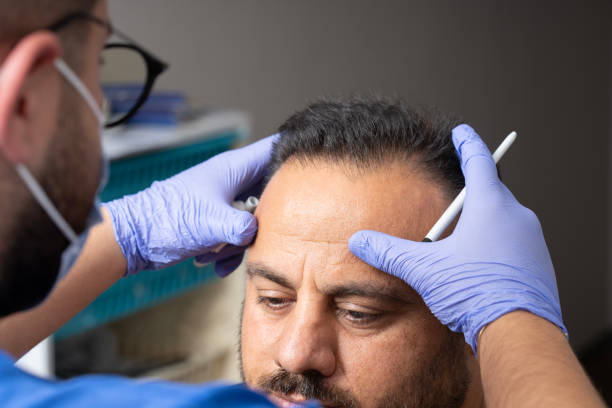A Comprehensive Guide to Finding the Best Hair Transplant Solution, Surgeon, and Clinic Near You
Loss of hair is a common problem that affects millions worldwide, often leading to reduced self-esteem and confidence. Fortunately, advancements in medical technology have provided effective hair thinning solutions, allowing individuals to restore their hair and regain confidence.

Understanding Hair Transplants
Hair transplant surgery is a procedure that involves removing hair follicles from one part of the body (typically the back of the scalp) and transplanting them to an area experiencing hair loss. Each method has its pros and cons, with FUE often preferred for its minimally invasive nature and quick recovery, while FUT may be better suited for those requiring a larger number of grafts. The two main types of hair transplant procedures include:
Follicular Unit Transplantation (FUT): A strip of skin is removed from the donor area, and the hair follicles are extracted and transplanted to the thinning or balding areas.
Follicular Unit Extraction (FUE): FUE hair transplant uses small punch tools to extract individual hair follicles, resulting in minimal scarring and a faster recovery time.
Identifying the Best Hair Transplant Options The right hair transplant procedure depends on various factors, including budget, extent of hair loss, and personal preference. Consider these key points:
Consult with Multiple Surgeons: Different clinics offer various techniques, so consulting multiple experts ensures you find the best hair restoration clinic for your needs.
Evaluate the Clinic’s Reputation: Researching patient reviews, before-and-after photos, and success stories will help determine the best hair transplant options.
Understand the Costs: Hair transplant cost varies based on the number of grafts, surgeon expertise, and clinic location. Many clinics offer financial plans for an affordable hair transplant.
Comparing Hair Transplant Costs: Understanding hair transplant cost is crucial when planning the procedure. Prices vary based on several factors, including the technique used and the number of grafts required. Below is a breakdown of estimated costs:
Hair transplant cost: Typically ranges from a few thousand to several thousand dollars.
Hair plugs cost: Varies depending on the number of plugs required for coverage.
Hair plantation cost: Similar to FUE and FUT procedures, cost depends on the extent of transplantation.
Hairline transplant cost: Generally more expensive as it requires detailed artistry to create a natural look.
Hair implant cost & hair implants price: The price depends on the clinic and method used.
Hair graft cost & hair graft price: Charged per graft; more grafts increase the cost.
Hair surgery price: Includes the surgeon’s fee, anesthesia, and aftercare expenses.
Hair planting cost & hair restoration surgery cost: Depends on hair thickness desired and procedure complexity.
Hairline implant cost: A precise and artistic procedure with a variable price.
Hair transplant for men & Hair transplant for women: Different approaches may be required based on gender-specific hair loss patterns.
Best hair transplant: Selecting the top clinics and surgeons ensures optimal outcomes.
Hair restoration surgery cost: Comprehensive expenses covering all aspects of surgery.
Choosing the Right Clinic and Surgeon : Selecting a reputable clinic and experienced surgeon is critical for achieving natural hair restoration and optimal results. Consider these key factors:
Certification and Qualifications: Ensure the surgeon is certified and the clinic adheres to medical standards.
Experience in Hair Restoration: Skilled surgeons with extensive experience in hair transplant for men and hair transplant for women can provide the best outcomes.
Before-and-After Photos: Reviewing past patient results helps assess the surgeon’s expertise and expected hair transplant results.
Hair transplant success rate: A higher success rate indicates a more reliable clinic and surgeon.
Finding Clinics Near You
Whether opting for a local hair restoration clinic or traveling for treatment, researching options thoroughly is essential. Use online platforms to compare clinics, read patient testimonials, and explore affordable hair transplant solutions. Some clinics offer consultations in multiple locations, allowing patients to evaluate their options in person before making a decision.
Post-Transplant Care and Expectations
Immediate Aftercare: Expect mild swelling, redness, and discomfort, which subside within days.
Hair Shedding: Transplanted hair may fall out initially before regrowth begins—a normal part of the process.
Visible Results: New hair growth typically starts in 3–4 months, with full results visible within a year.
Hair Regrowth Treatments: Additional treatments may be recommended to enhance and maintain hair growth.
Best hair regrowth treatment: Various non-surgical options can support post-transplant hair growth.
Thinning hair treatment: Complementary therapies can be used alongside transplants to improve density.
Conclusion
By conducting thorough research, consulting with experts, and understanding the procedure, you can make an informed decision to restore your confidence. If you are ready to take the next step, consult with a prestigious hair restoration clinic to explore your options. With the right approach, you can achieve the best hair regrowth treatment and enjoy long-lasting, natural results.







